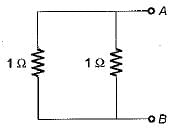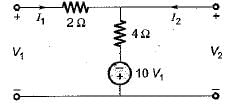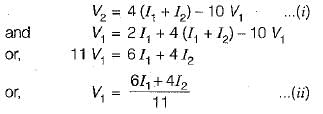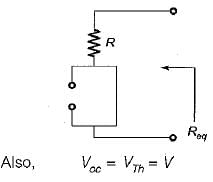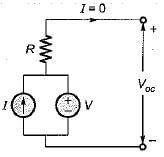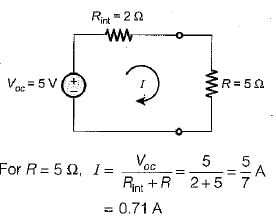Test: Circuit Theorems - 1 - Electronics and Communication Engineering (ECE) MCQ
10 Questions MCQ Test - Test: Circuit Theorems - 1
Superposition theorem is applicable only to network that are
In any lumped network with elements in b branches  for all holds good according to
for all holds good according to
 for all holds good according to
for all holds good according toThe Theven's equivalent resistance to the left of AB in figure given below is given by
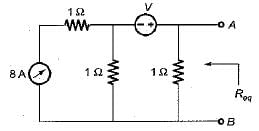

For which of the following, Thevenin’s and Norton’s equivalents can’t be developed?
In which of the following it is not desired to attain the condition of maximum power transfer?
A simple equivalent circuit of the two terminal network shown in figure below is
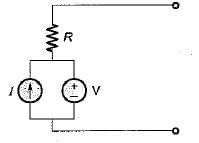
For the circuit shown below, a resistance R is to be connected across an active network, it is given that when
(i) R =∞, V = 5 volts
(ii) R = 0, current output of the active source is 2.5 A.

What would be the current through tfwhen the value of R is 5 Ω?
A generator of internal impedance I ZgI delivers maximum power to a load impedance Zp , only if
In the circuit shown below, the current through the 5Ω resistor is
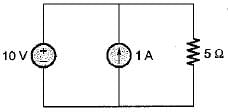


 means the total sum of instantenous power consumed in various elements in the branches of a network is zero, which is the statement of Tellegen’s theorem.
means the total sum of instantenous power consumed in various elements in the branches of a network is zero, which is the statement of Tellegen’s theorem.
